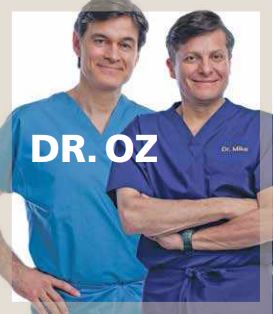
Chronic pain plagues millions of Americans. In urban areas, around 17 per cent of folks say that they hurt pretty badly most or every day; in rural areas, it tops 28 per cent. Such persistent aches and pains can arise from out-ofsorts joints and muscles; from nerve damage associated with injury, neurological disease or diabetes; or they may be related to chronic fatigue syndrome, endometriosis, fibromyalgia, inflammatory bowel disease, interstitial cystitis, temporomandibular joint dysfunction and some cancers. Sometimes there is no identified cause, but that doesn’t make the hurt any less real — or any less deserving of effective treatment.
Prescription pain-relieving drugs can cause more problems than they solve. Even over-the-counter pain relievers such as NSAIDs can have undesirable side effects, ranging from gastrointestinal upset to cardiovascular problems. Sometimes you may need them, but for the long haul, you want to use nondrug therapies to ease your ache and restore mobility, energy and overall health. Fortunately, as we learn more and more about how pain operates in the body, we are identifying new ways (sometimes using very old techniques) to manage it.
Goal No. 1: Reduce chronic inflammation.
Pain is inflammatory. When there is an injury or irritation to a part of your body, immune-systemrelated healers are called in to help you heal. But if that response persists, what is intended to help you heal ends up “heating up” tissue and cells. That can cause pain — and even if that chronic inflammation subsides, pain can continue because of damage done by the inflammatory response itself.
Goal No. 2: Relax mind and body.
Your response to pain happens from a combination of physical sensations and emotional reactions. That forms a feedback loop that can increase your pain sensitivity and amplify its physical and emotional effects.
Goal No. 3: Increase physical abilities.
Pain can make you shrink from the world, become sedentary and increase your physical limitations. As you move less, many body parts begin to hurt more, adding to your pain burden.
How to meet those goals. Reducing inflammation through diet. A new study published in Nature Metabolism has found that the typical Western diet — overloaded with omega-6 fatty acids found in vegetable oils — increases the risk of chronic pain by triggering nerve dysfunction. It is particularly harmful for people who have diabetes and obesity.
However, the researchers also found that reducing intake of processed foods and omega-6 fatty acids and upping your intake of foods rich in omega-3s, like salmon and sea trout, can reduce or reverse pain associated with diabetes, arthritis, injury or surgery.
While you do need some omega-6 (from healthy sources like walnuts, peanut butter and tofu), you get much more than is healthy because of a diet loaded with chips, fast food, baked goods, vegetable oils and cured meats like bacon and pepperoni. A diet that contains a ratio of two to three parts omega-6s to one part omega-3s can ease inflammation-related pain, but many Americans have an incendiary 15:1 ratio. Yikes! Other anti-inflammatory tools include stress management, physical activity and avoiding toxins such as PFAs and BPAs.
Distancing yourself from pain. When you relax your mind and body, your perception of and reaction to pain decreases. Practices like deep breathing, meditation, yoga, progressive relaxation and mindfulness-based stress reduction can help you by increasing blood flow to painful areas, relaxing muscles, tamping down nerve responses and easing depression, while increasing physical functioning. Massage and acupuncture can also be very soothing.
Move it to lose it. Many recent studies show that low- to moderateintensity exercise two to three times a week significantly improves pain, depression, anxiety and quality of life in chronic pain patients. The key is to work with a physical therapist to tailor a program just for you and your abilities, and to stick with it for the long haul.
We hope these self-care tips will help you take control of your pain and reclaim a more active, enjoyable life.
-Michael Roizen, M.D., and Mehmet Oz, M.D.

Leave a Reply